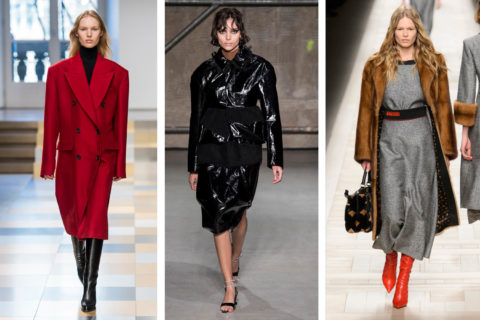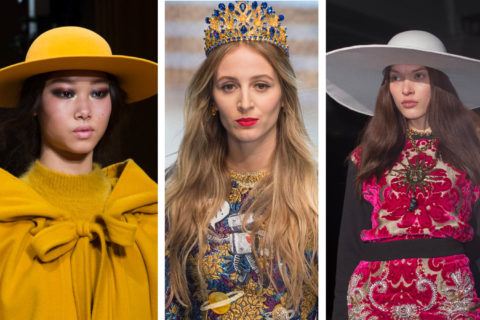The Five Most Socially Charged Trends From Milan Fashion Week

Fashion always offers up its own reading on the current state of affairs. Based on the F/W 2017 shows at Milan Fashion Week, the mood is unsettled but there’s a palpable revolutionary spirit taking hold. Here are five trends that speak to this restive political mood.

1. Politically fashionable
Immigration, human rights and feminist sentiments were central themes at Stella Jean, Missoni and Versace. Immigration, in particular, is a sensitive matter in this country. A few days before MFW more than 70 asylum-seekers from North Africa drowned while crossing the Mediterranean in the hopes of reaching Italy.
The Cold War and the collapse of the Berlin wall were sources of inspiration for Stella Jean—both literally in the form of U.S. and Soviet military embellishments—but also thematically. “Too many barriers still continue to stand in the name of a “photo-shopped” civilization, to separate, detain and violate the rights and freedom of peoples and cultures,” she wrote in her show notes.
At Missoni, guests and models were gifted with pink “pussy hats.” It was creative director Angela Missoni’s riposte against U.S. President Donald Trump, and a continuation of the January rallies against Trump (who bragged in a 2005 video which surfaced during his campaign, about grabbing women’s genitals.) At the close of the show, Angela spoke of the need for the fashion community to show that it stands united in its support for human rights. “I wanted to have a regular show, but at the same time I thought that when I have a show my voice is louder, so I can use it for a good cause…to support the women’s march and movement, and for everybody who believes that we need to raise a voice for human rights,” she told Reuters after the show. Pussy-hat homages were also seen at the Versace show. And Halima Aden, the hijab-wearing Somali-American model, was prominently featured in the Max Mara and Alberta Ferretti shows.

2. Diverse POV
Milan hasn’t always had a stellar past for showing diversity on its runway, but there was definitely more effort made to showcase a variety of model types—both in terms of age, race and religion. There was general relief and praise for that. It felt modern—and less tokenistic.

3. Making do in a time of uncertainty
You don’t need to know the Doomsday Clock was moved closer to midnight a few weeks ago to sense the uncertainty and anxiety that pervades all sectors of society from business to politics to fashion. Look at Jeremy Scott’s Moschino show for example. His motif recalled a character in a Theodore Dreiser novel, where a once-successful swell tries to keep up appearances. His line evoked a grandee’s life now held together with bolts of cloth and pieces of drapery. It was an arch commentary of our “stuff” as George Carlin might have said.

4. Stripping away the frills
Some designers were subtle. Others had all the finesse of an Alitalia Airbus 330. But collectively, they all had something to say about the current state of the world politically, socially and economically. Some offered up simple elegance for contemporary needs; clothing as armour in a trying day-to-day world, while still providing frill and panache where required. Fendi’s collection epitomized this, right down to its wooden catwalk. The same masculine-infused minimalism was found at Jil Sander. At Marni, the “garbage bag” coats were perhaps a whimsical comment on our throw-away society.

5. Divine inspiration
“When they go low, we go high” took on a whole new meaning in Milan. For starters, there was the Catholic mass Monday at the Duomo di Milano cathedral for Franca Sozzani. The venerable editor of Vogue’s Italy edition died in December after a year-long illness. Hundreds of designers, stylists, and models joined her friends and family for the tribute. But on the runway itself, there were hats more suited to the Holy See instead of High Fashion. Fausto Puglisi and Alberta Ferretti were notable in this regard. Dolce & Gabbana and Gucci also found inspiration in the heavens—in the astronomical sense. It was a reminder that inspiration is where you find it: be it in the streets of a Milan comune, or among the same stars that attracted the gaze of Galileo hundreds of years ago.







